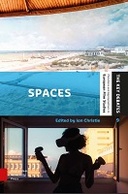Explore

Film has long been defined as a temporal art, most famously by André Bazin and Andrei Tarkovsky. Yet more fundamentally it has always been a spatial art, transporting its audiences imaginatively to spaces and places other than those they literally inhabit. In the digital era, this spatial illusion and paradox has been greatly expanded – by the predominance of domestic film viewing, along with new extra-terrestrial perspectives, and the promise of novel kinesthetic experiences with Virtual Reality and “immersion”. The international authors in this collection address the history and aesthetics of screen media as spatial transposition, in a range of exemplary analyses that run from the landscapes of John Ford’s westerns to Chantal Akerman’s claustrophobic domestic spaces, from the conventions of the English country house film to Patrick Keiller’s Robinson roaming a changed country, and from the experiences of Covid pandemic confinement to those of un-homed van-dwellers in Chloe Zhao’s award-winning NOMADLAND.
This book is included in DOAB.
Why read this book? Have your say.
You must be logged in to comment.
Rights Information
Are you the author or publisher of this work? If so, you can claim it as yours by registering as an Unglue.it rights holder.Downloads
This work has been downloaded 37 times via unglue.it ebook links.
- 37 - pdf (CC BY-NC-ND) at Unglue.it.
Keywords
- Art forms
- Electronic, holographic & video art
- Non-graphic art forms
- The arts
- thema EDItEUR::A The Arts::AF The Arts: art forms::AFK Non-graphic and electronic art forms::AFKV Digital, video and new media arts
Links
DOI: 10.5117/9789048563265Editions

